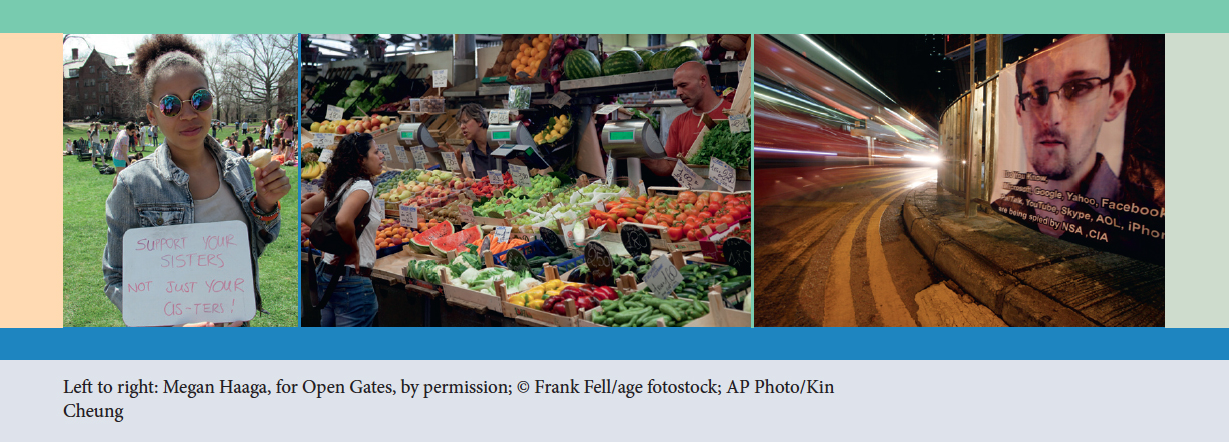Why Is Sustainability Important When It Comes to Food?
25
Why Is Sustainability Important When It Comes to Food?

A major change in American culture over the past decade or so has been a growing interest in food; turn on the television at any hour of the day or night, and you can find someone demonstrating how to prepare food, generally on several different channels. At the same time, the notion of sustainability has become a hot topic and the topic of considerable debate. (There’s a good chance that it, like diversity, has become or has been a buzzword on your campus in recent years.) What, then, would sustainable food look or taste like? And why does sustainability matter? The selections in this chapter will help you consider these issues and why they are far more complex than they might, at first glance, appear.
The chapter opens with an excerpt from Christian R. Weisser’s 2014 book, Sustainability: A Bedford Spotlight Reader, which provides an extended definition of the term sustainability and explores why it matters. This selection will give you a framework for thinking about sustainability with regard to what we — and others — eat. The next three selections examine what qualifies as sustainable food. As you’ll discover, there are sharp disagreements about this topic. In “Attention Whole Foods Shoppers,” political scientist Robert Paarlberg advocates the use of genetically modified seeds (and hence foods) as a way of helping to solve the food crisis in developing nations, an issue he contends has fallen off the radar of many Americans as they have become increasingly obsessed with what they eat. In an excerpt from Animal, Vegetable, Miracle, author Barbara Kingsolver and her husband, ornithologist Steven L. Hopp, argue with equal vigor that genetically modified seeds and plants are anathema: something to be loathed and even cursed. In the following selection, “Are Engineered Foods Evil?” from Scientific American, David H. Freedman promises to offer the truth about genetically engineered foods. You’ll get to determine whether you believe what he delivers. You’ll also immediately notice when comparing these three selections that different authors use different criteria for evaluation and thus, not surprisingly, they reach different conclusions, although they would contend they are arguing about the same topic.
This chapter’s visual argument, “Apples to Oranges,” by Claire Ironside, presents evidence that supports the “eat local” partisans while demonstrating what a carbon footprint is and how it figures into debates about sustainability and food. In the following selection, Eric Mortenson, a journalist who covers agricultural topics, writes about how the owners of a small farm outside Portland, Oregon, have gone organic and are diversifying their efforts to remain local and remain in business, another aspect of sustainability. In a similar vein, in an excerpt from her 2012 book, Change Comes to Dinner: How Vertical Farmers, Urban Growers, and Other Innovators Are Revolutionizing How America Eats, Katherine Gustafson examines some of the challenges found by those who eat locally and want to help others do the same. As this selection reminds us, eating sustainably at the local or international level, however defined, requires a great deal of effort on the parts of all kinds of folks.